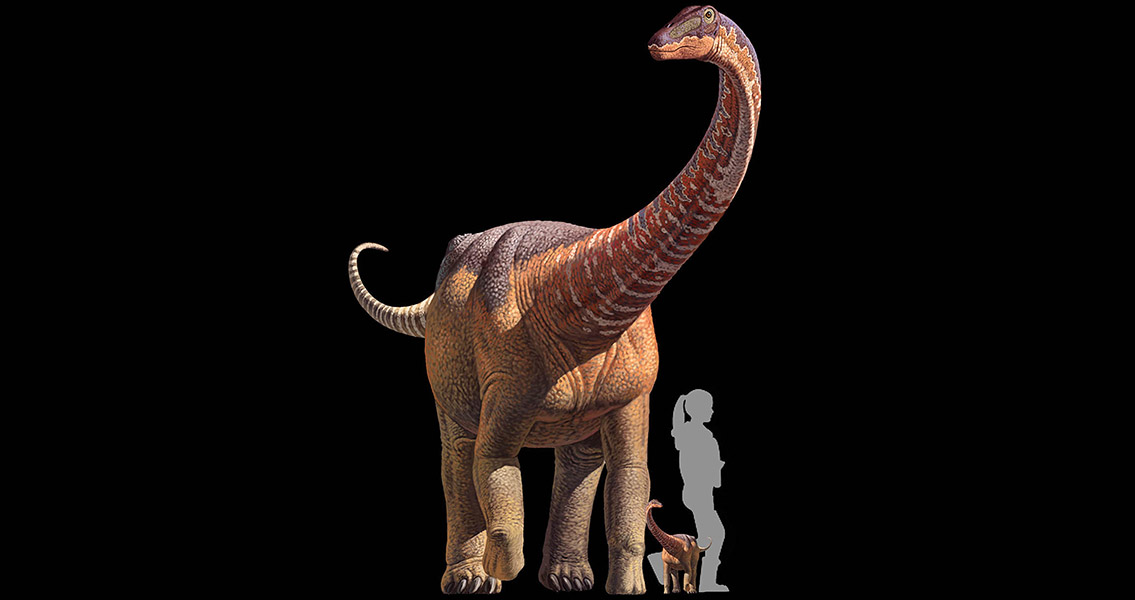<![CDATA[Sauropods are only known to us by the fossil record. Now, the discovery of a fossilized infant sauropod has shed new light on the how the dinosaur species developed. There were several long-necked dinosaur species that existed from the Late Triassic to the Cretaceous, approximately 210 to 66 million years ago. Known collectively as the sauropods, they included species and subspecies like the Apatosaur, the Brachiosaur, and the Titanosaur. These behemoths were some of the largest land-dwelling animals in the history of the Earth, yet despite this we know little about their early days; fossils from newly-hatched and juvenile sauropods are exceedingly rare. However, thanks to new research into a titanosaurian sauropod known as a Rapetosaurus, scientists have been able to reveal much more about baby sauropods and how they lived. In fact, the newborn titanosaur was actually more capable than adult specimens and didn’t seem to need much parental oversight once it had hatched, much in the same way that some modern herding mammals and birds are shortly after birth, according to the newly-gathered evidence. The research endeavor, which was conducted by a team of scientists from St. Paul, Minnesota’s Macalester College and funded by the National Science Foundation (NSF), involved the study of several different lines of evidence in order to investigate how sauropods developed and grew. Kristi Curry Rogers, the head researcher for the project, said that the Rapetosaurus skeleton, originally found in Madagascar’s Upper Cretaceous Maevarano Formation, was exceptionally young. While this made it hard to identify at first – the remains were so diminutive that it was first thought to have been a fossilized crocodile – this hatchling titanosaurian represented the first-ever opportunity to examine a sauropod during the earliest stage of its life. Curry Rogers and her colleagues, which included the University of Minnesota’s Brian Bagley, Mike D’Emic of Adelphi University and the University of Washington’s Megan Whitney, found that the limbs of the baby Rapetosaurus were built for what would become its massive size and weight as an adult, though it was just a fraction of that adult size at birth. According to a university press release, the team got an up close and personal look at the structure of the hatchling’s limb bones thanks to the use of high-resolution computerized tomography (CT) scanning technology. On a microscopic level, the dinosaur’s leg bones proved to be similarly patterned to living animals of today. Based off these modern analogues, the beginning of the Rapetosaur’s post-hatching life was reconstructed by the scientists; patterns preserved in the fossilized remains included bone remodeling, cartilage growth at either end of the specimen’s limb bones, and blood supply as well. According to Curry Rogers, this indicated that the hatchling would have grown about as rapidly as a modern newborn mammal. The creature likely only lived a few weeks before it died, the scientist added. As for why this titanosaurian sauropod died so young, Curry Rogers said that it was likely born into a harsh and unforgiving environment. The Maevarano Formation, where the fossil was found, is understood to have been under an intense drought when it was formed around 65 to 70 million years ago. The new research study, which appears in the journal Science, can be found here Image courtesy of Kristi Curry Rogers]]>
Infant Titanosaur Fossil Reveals Early Dinosaur Life
